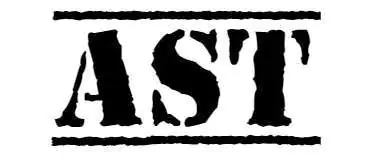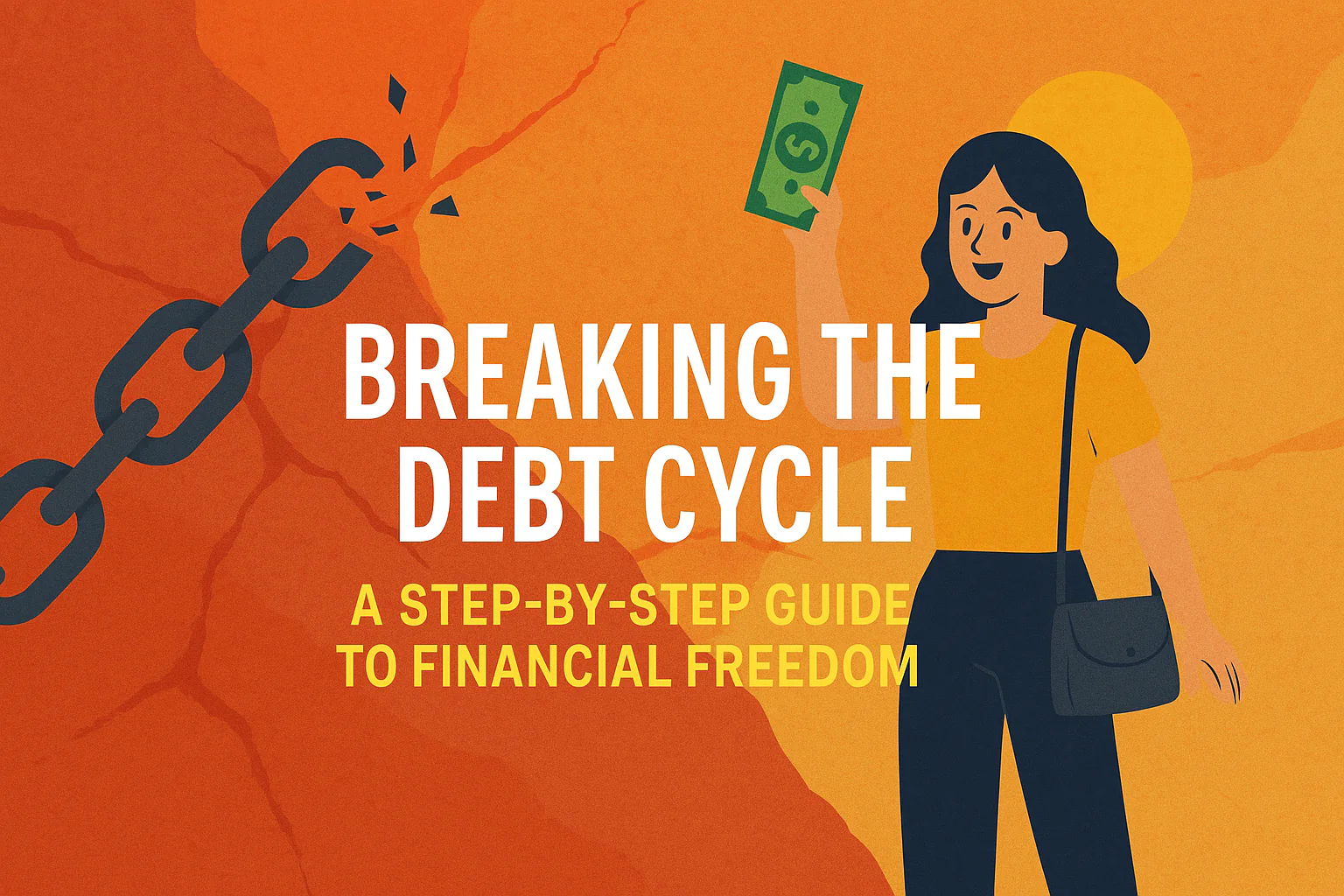Debt enters your life, and all you want to do is escape its clutches. A clear path laid out together with regular efforts will help you escape and establish long-term financial prosperity. This book will lead you every step of the way, including knowing the accurate state of you and your financial life, to adopting new habits that guarantee your future financial freedom as a debt‑free person. OK, we will begin.
Table of Contents
1. Admit, and Learn About Your Debt
You can never solve a debt problem before you know what it is and why it is there.
- Record all the liabilities: List all the credit cards, student loans, personal loans, auto loans, and medical bills.
- Note important information: Take note of the outstanding balance, interest rate, minimum payment, and due date on all of them.
- Find out regular patterns of spending: What caused the debt? Overspending? Emergency expenses? The identification of the cause can help to avoid the repetition of mistakes.
Pro tip: Organize all your numbers in a spreadsheet or a debt-tracking app so you do not lose them. It is less frightening to observe the complete picture and, thus, it is more implementable.
2. Establish Realistic Goals Set
Fuzzy ends and fuzzy means. Make the goals specific by making them debt-free.
- Short-term objective: Repay one petite indebtedness in three months.
- Medium-term objective: Clear off all balances of the credit cards at the end of the year.
- Long-term objective: Pay off all debts (student loans and auto) within five years.
Provide deadlines and milestones. Every win, no matter how small it may be, must be celebrated to maintain motivation.
3. Developing a Workable Budget
Budget is not supposed to make you feel limited, but it is something that empowers you.
- Monitor your wages: Add your paychecks, side jobs, and any passive income.
- Name expenses: Housing, utilities, groceries, insurance, entertainment, etc.
- Zero budget: Spend each rupee of your income on a budget item (and you pay the debt also), and your income minus expenses adds to zero.
Sample Monthly Budget
| Category | Amount (₹) |
|---|---|
| Income | 60,000 |
| Rent | 15,000 |
| Utilities & Bills | 5,000 |
| Groceries | 7,000 |
| Transport | 3,000 |
| Debt Payments | 12,000 |
| Emergency Fund | 5,000 |
| Entertainment | 3,000 |
| Savings/Investing | 10,000 |
| Total | 60,000 |
Tip: Automate transfers for debt payments and savings right after you receive your salary. Out of sight, out of mind!
4. Select a Debt Repayment Strategy
Two common ways can give your progress a boost:
- Debt Snowball: Paying the least amount on the bill, then rolling that same payment to the following least. Excellent with high energy and fast clinkers.
- Debt Avalanche: Pay off the higher-interest-rate debt to reduce cost over the long term.
They both work; choose the one that fits your mind and become consistent.
5. Trim Costs and Aim for Savings
Small reductions will allow additional finance to repay debts.
- Audit subscriptions: Cancel unused streaming services or gym memberships.
- Reduce pampering: Use homemade coffee, make your food, or get free activities.
- Haggle over bills: That is about calling your cable, internet, or insurance company and requesting them to offer you lower rates.
Each rupee that you save makes your trip to zero debt even faster.
6. Raise Your Profits
Increasing your cash flow can accelerate the process of paying debt.
- Side jobs: Tutoring, freelance, delivery, or selling handmade items online.
- Turn hobbies into money: Begin a passion Project is a business based on hobbies, such as photography, writing, acting, or coding.
- Request a salary increase or promotion: Most of us have done the hard work of contributing to workplace value, and now it is time to negotiate.
Any extra income must then be directed to either the debt or the savings account, not to the lifestyle.
7. Make an Emergency Fund
An emergency fund ensures that you do not utilize credit in case of any emergencies.
- Target: Followed by 10,000-20,000 rupees, then build up to 3 to 6 months of living expenses.
- Location: Invest funds in a high-interest savings account where the money is easily accessible.
- Respect: Treat contributions like debts that cannot be negotiated every month.
Having emergencies addressed, you will not get into new debt and will be able to stay on track.
8. Plan Again and Change Your Plan Frequently
The circumstances of life change, and so should your financial strategy.
- Weekly observation: Determine the expenditure, debt balance, and goal levels.
- Quarterly changes: Pay more on your debt as you become more financially successful or repay a loan.
- Annual review: Reevaluate long-term goals and pat yourself on the back (e.g., half your debt disappeared!).
Being open-minded is the thing that helps you not to lose your ground and to remain motivated.
9. Build financially healthy habits
It is not only about numerical figures but also about the attitude that will help one break the debt loop.
- Wise use of money: Take a moment between spending and impulse-buying. Question: Why do I need this?
- Deferred pleasure: Do not overspend money on credit, but save on large expenses.
- Life-long learning: Read books on personal finance, subscribe to quality blogs, or listen to money-talking podcasts.
In time, these routines develop into habits, and they make you debt‑free forever.
10. Use Financial Resources and Instruments
Make use of technology to simplify the process.
- Budgeting tools: You Need a Budget (YNAB) or Mint, or Goodbudget.
- Debt-tracking sheets: Debt-tracking sheets are customizable spreadsheets or premade templates.
- Learning systems: Coursera or Udemy, or Khan Academy to learn the personal-finance course.
The appropriate tools save energy, cut pressure, and improve confidence.
11. Address Psychological Setbacks
Debt is also accompanied by shame, stress, or hopeless feelings.
- Positive reinforcement: When you achieve a milestone, reward yourself with low-cost prizes (such as a movie night).
- Accountability partner: Talk your goals over with another friend and or family member who will help you stay on track.
- Professional advice: You may consider a financial coach or counselor when you feel shut down or just overloaded.
The most important thing is mental strength to weather it out.
12. Kick up Your Heels and See the Success in Your Mind
Tracking triggers your interest.
- Debt thermometer: A Graphical calculator, which gets filled out when you repay the balances.
- Milestones gifts: Reward yourself (an affordable amount) when you pay a large amount of debt.
- Vision board: Pin pictures of what you would like to achieve as a reminder of what you want to work towards, such as a debt-free vacation.
The process of the journey becomes rewarding when one can see some visible progress.
13. Prepare Long-Term Wealth Building
When paying off debts has been successfully done, gear towards wealth creation.
- Spread money around: mutual funds, index funds, real estate, or retirement accounts.
- Maximise tax-favored accounts: PPF or EPF in India, or NPS or ELSS in India.
- Pay discipline: Invest consistently, even when markets are up or down.
True financial empowerment is not where you get out of debt.
14. Educate and Spread What You Have Learned
In sharing, we acquire knowledge.
- Use your example: inspire acquaintances or relatives to begin to live their own debt-free lives.
- Launch a blog or a podcast: Teach other people tricks, successes, and traps.
- Become a volunteer/mentor: Pledge to community activities on financial literacy.
Sharing your knowledge helps you to strengthen your practices and serves your society.
Conclusion
Avoiding the debt penitentiary is not a short-term thing but a process of revolution. You can take control of your finances by establishing a clearer idea of what you owe, defining clear objectives that will need to be pursued, creating an achievable budget, and implementing practical repayment plans. Add good consumer psychology, such as conscious spending, active plan revisions, and lifelong learning, and it will not only get you out of debt but also create the base of long-term prosperity and security.
And this is the important thing: With each rupee you shift out of serving the debt loop and into savings or investment, the rupee multiplies over the years, pushing you towards the kind of financial freedom you can spend. Begin today, keep on keeping on, and never forget to rejoice over every step in the right direction. Get ready to join a world of people who live free of debt-and you will finally have a piece of mind!




